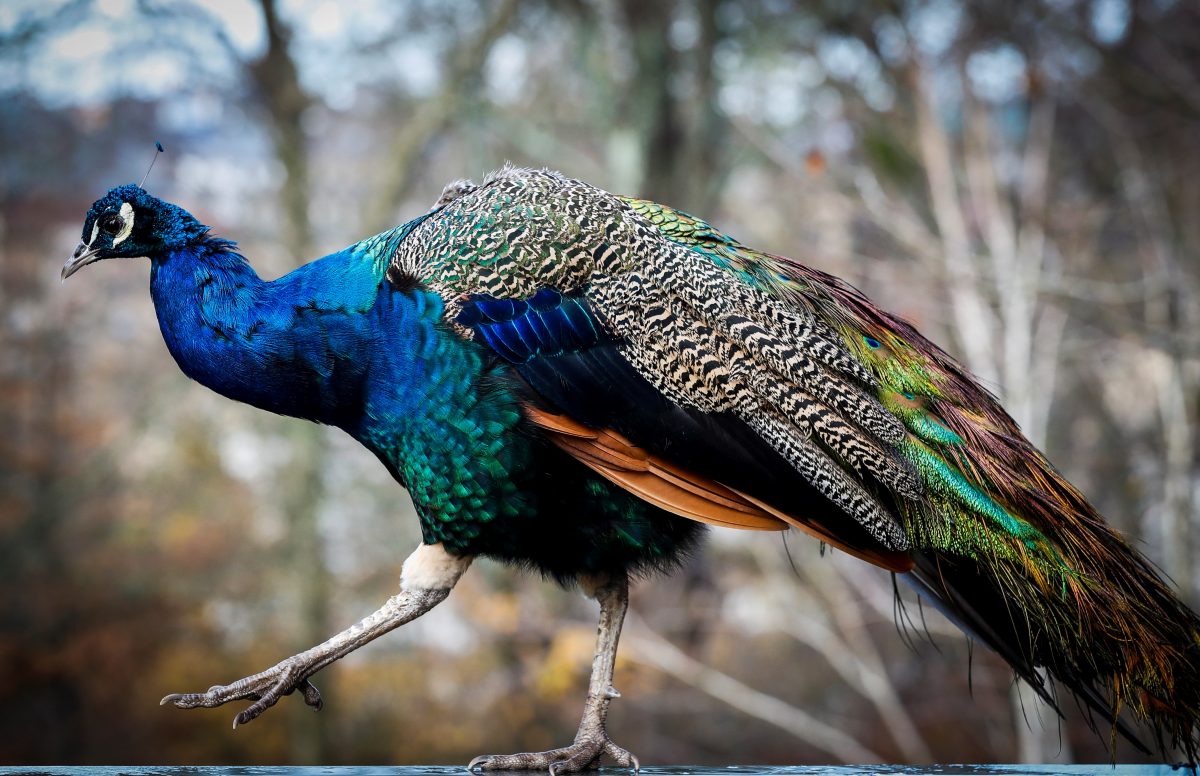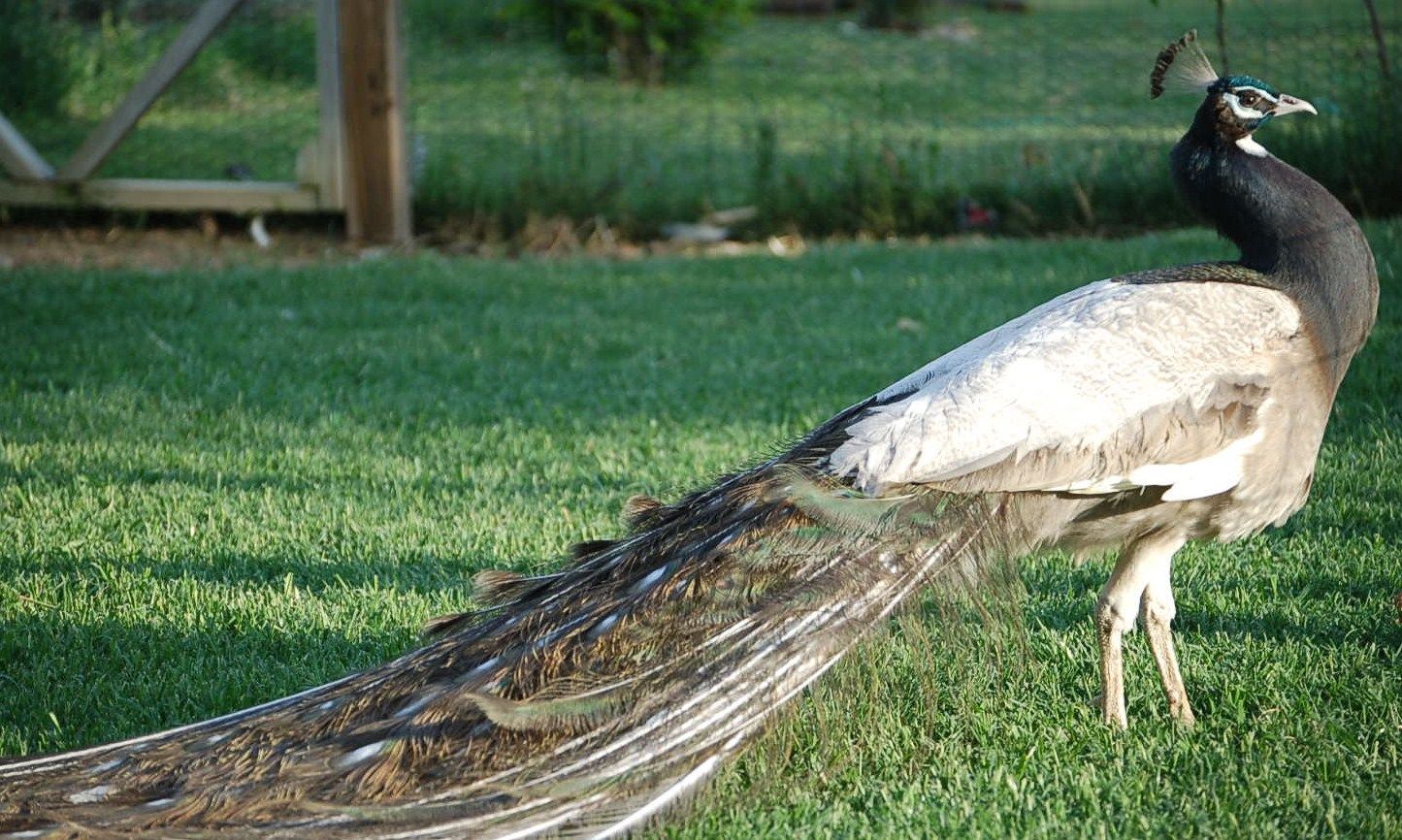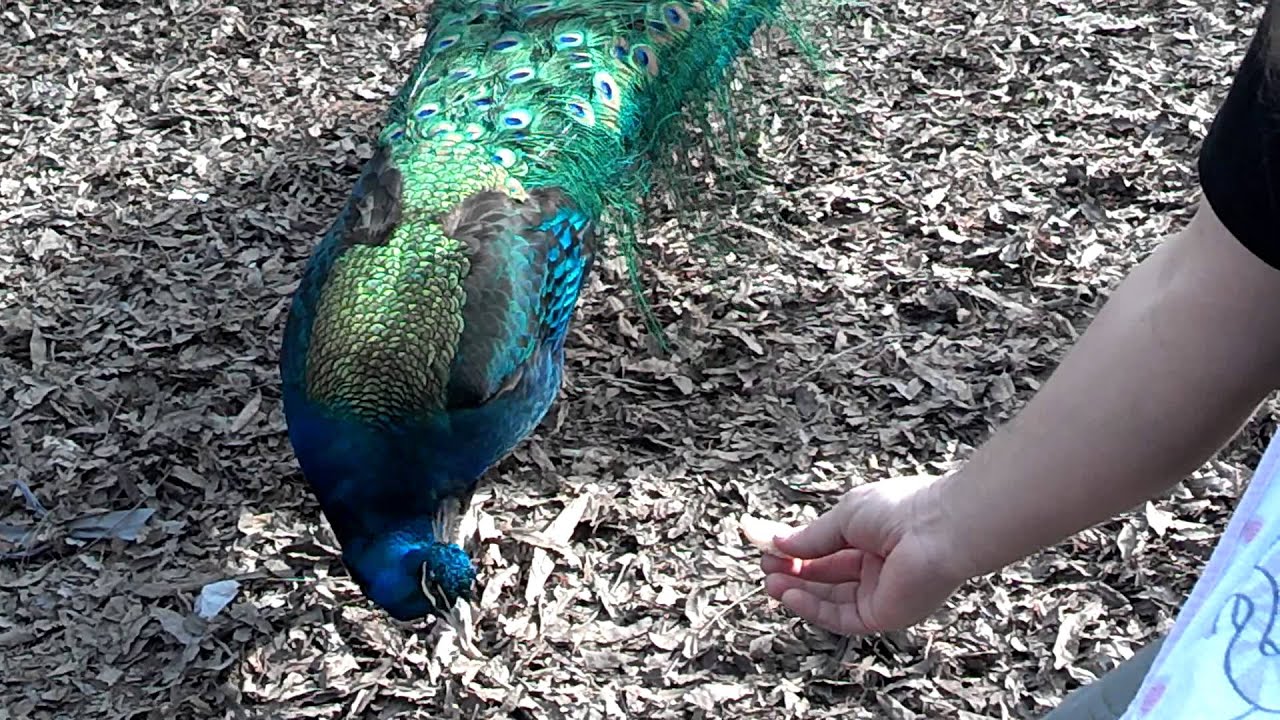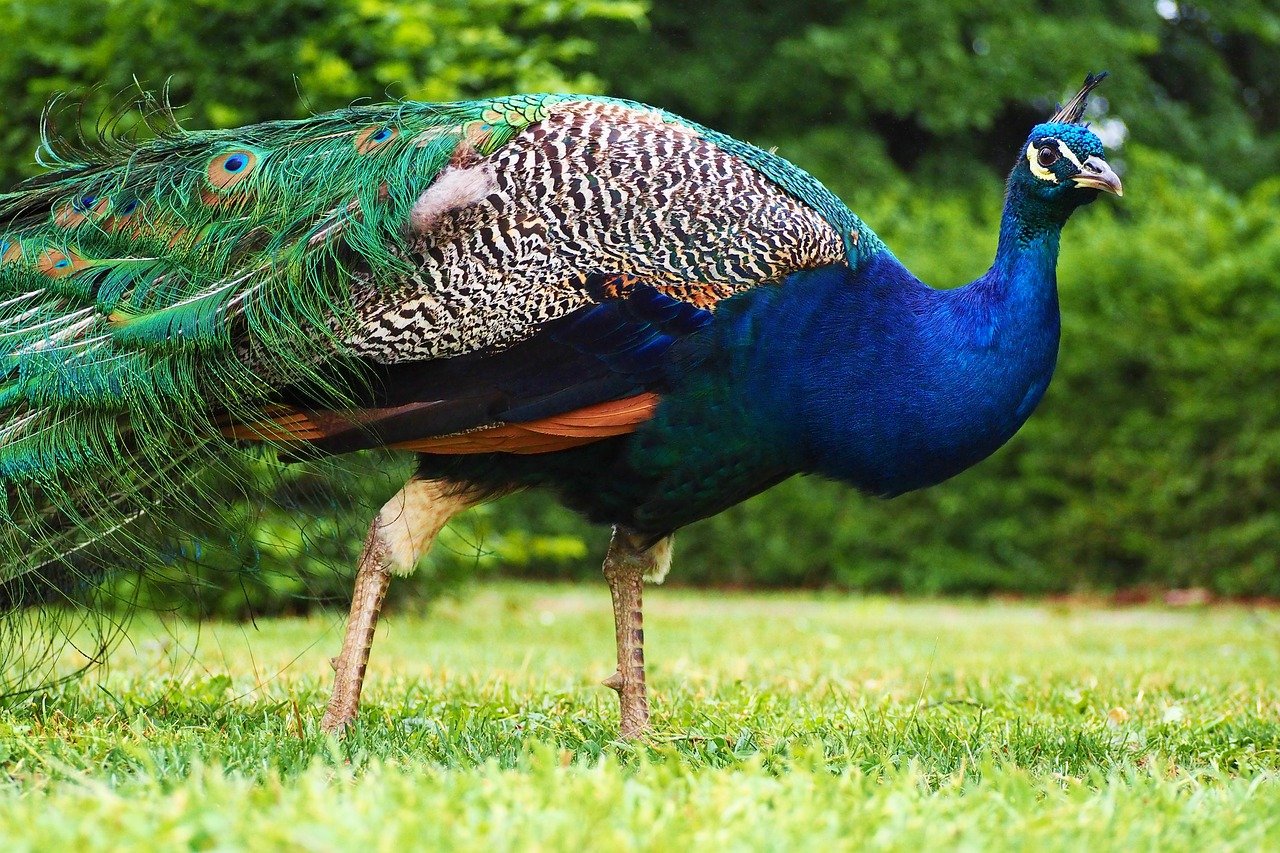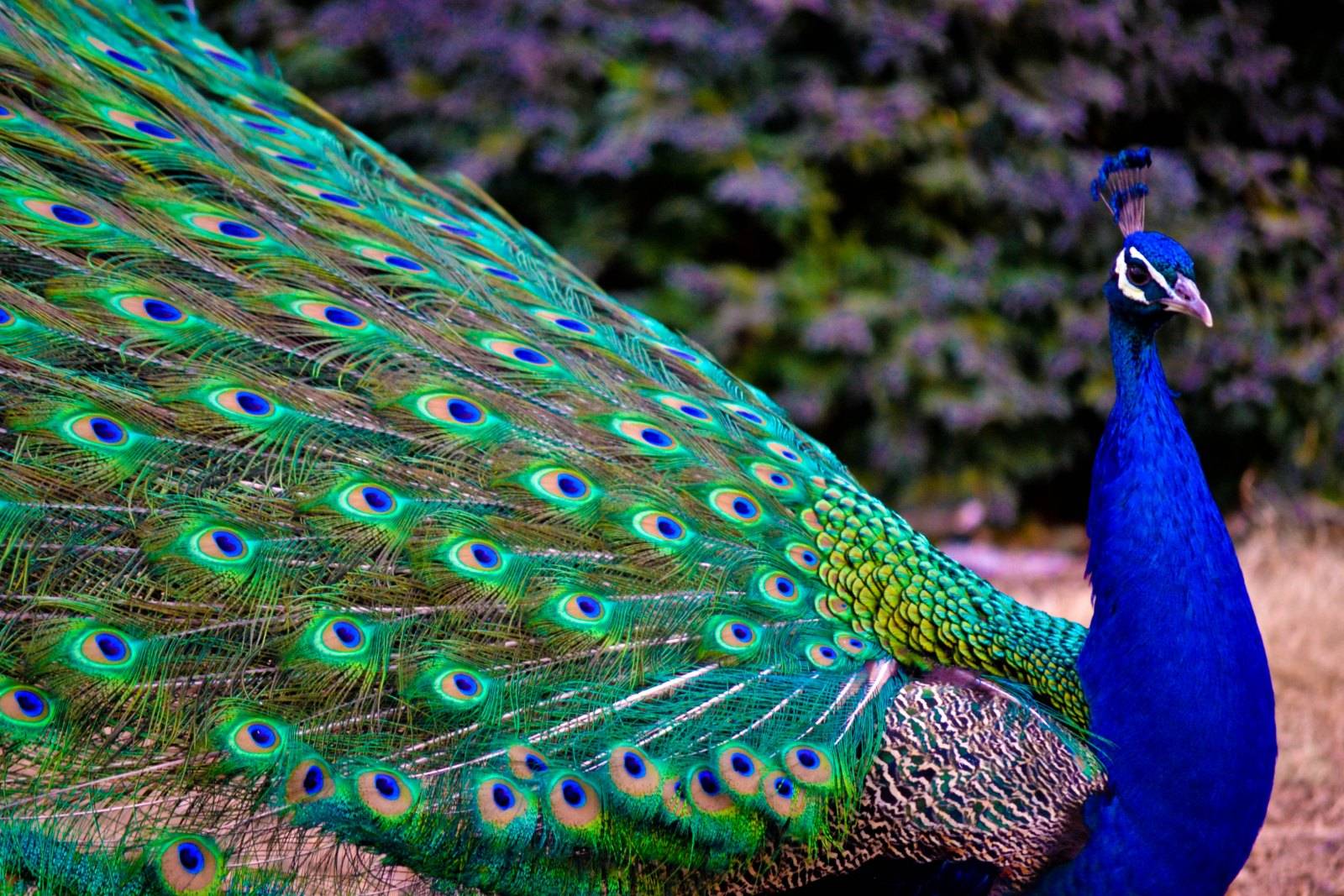Undoubtedly one of the most exotic birds that exists today, with a particular mission, which is, in the case of the male, to amaze people with its brilliant colors and behavior and, in the case of the female, Peacock, not with such a bright hue in its plumage, however, just as important in the ecosystem, as well as in the animal kingdom and even a perfect example of adaptation.

Habitat where the peacock is found
This heavy bird had its origins in South Asia, being found throughout the south of the country and in arid regions of Sri Lanka, mainly at altitudes less than 1800 meters above sea level (masl), living in places near the 2000 m, on some occasions. They exist in both dry and humid deciduous forest areas, but they manage to adapt to life in places where agriculture is practiced and close to human settlements, preferably where there are aquifer tributaries.
Certain researchers and historians have inferred that this species was inserted into the European continent thanks to Alexander the Great, while others claim that it was found as early as Ancient Greece around 450 BC. C., managing to be introduced much earlier. From that moment on, it has been exported to various parts of the world, managing to find it in the wild.
Brief description of the peacock
This bird corresponds to a species with marked sexual dimorphism. Referring to the male of this breed, it can measure between 100 to 115 centimeters from beak to tail, reaching an impressive 225 centimeters to the end of its large special feathers that make up the fan, also called the secondary tail, when They reach their full development, reaching a weight between 4 and 6 kilograms. The female weighs between 2 to 4,5 kilograms.
male peacock
The feathers of the anterior part of the animal are blue with very bright cobalt gradations, with green parts, similar to the Parrot on both sides of the head. In this one, a gray beak is placed and they have on top a kind of tuft of feathers with a bare white shaft and blue tips with greenish tones. It has the eye and below these two white lines of skin without feathers, which helps to identify it beyond the plumage.
The back area is made up of feathers that resemble scales, black and green with added bronze and copper tones. Its wings and its scapular insertion are black barred with white, more so with the main feathers, visible only during the flight, of a cinnamon color. Its primary tail is dark brown, while its courtship tool (secondary tail) is shades of green to gold, with iridescent gradations of blue and bronze.
female peacock
The color of the female's head is brown with reddish tones with a white face and a plume similar to that of the male, with brown ends with green parts. It has a metallic green neck and chest plumage in dark brown gradations with green spots. The upper body of the female Peacock It has a brownish-brown tone with lighter areas, the tail, both primary and secondary, being somewhat darker. They don't have the big fan.
The little ones Peacocks newborns are yellow to brown in color with small dark spots early on. The back of the neck has a brown spot that joins the eyes. The plumage of the young males is similar to that of the females, but with chestnut wings and an inconspicuous plume. These do not have the secondary tail, but they develop it when they are two years old.
Talking a bit about mutations
This species has quite a few differentiations of the plumage phenotype due to various genetic mutations. These develop infrequently in nature, but making controlled crossbreeding of the species while in captivity has given different combinations, leaving some of them as common and leaving the unique concept of «blue peacock» for wild species.
These genetic alterations give rise to two types of color and pattern probabilities, explaining that variations of the tonalities achieve different shades throughout the plumage, while those of the sequence condition zones or color distribution, being necessary to have as a base the pigment of the wild stock or one of the pluralities. A color can be mixed with one or several characters, achieving different Peacocks, naming among them a silver harlequin opal peacock.
Description of the peacock shades
It is interesting to observe the results of such a complex process at the genetic level, but fascinating when it comes to quality and impressiveness. It is classified as:
Blanco: Corresponds to one of the most attractive combinations, obtained thanks to the selective mating of turkeys that had white spots on their pattern. The mutation they carry leads to total leucism, which prevents melanin from being present in the feather cells, leaving the plumage of both sexes entirely white. The progeny, at birth, are light yellow in color, similar to the color of Canaries little ones.
Bronze: It refers to the plumage on the neck, the head and the simple eyes (ocelli) of the secondary tail, which is an intense brown tone, with certain metallic green parts that stand out around the head, managing to darken in the nearby areas. to the body.
Cameo: Moments before courtship begins, the feathers are dark brown, but these lighten as the days go by, becoming a faint brown, similar to "coffee with milk", with the wings being somewhat paler than the secondary queue. The neck and head remain dark brown, while the ocelli allow different shades of brown to be shown. The female's feathers are cream colored, not having iridescence or very prominent tones.
Charcoal: According to this, the areas where in the wild caste they are iridescent blue, in this mutation they are shiny black, without much luster. The secondary tail is black to gray in color, with single, strong-toned eyes. In the case of females, they tend to be darker than the blue species and without the green highlights of the neck.
Jade: The area on the front of the bird has an intense green, similar to jade. The secondary tail is brown, with some olive highlights with simple green eyes.
Midnight: With a great resemblance to the color of the wild breed, unlike a total melanism that achieves a much darker tone throughout its body.
Opal: The front of the Peacock it is dark gray, with the rest of the body a lighter shade of gray. The brightness of the chest is violet and the secondary tail has olive hues with blue, purple and green spots. The females and their young are entirely gray.
PeachAppearance: Consists of an accentuated shade of brown on the head, neck and upper part of the body, including the plume, making it possible to see lighter shades, being between brown and orange, almost the same as peaches, approaching white; for females the shades of brown are lighter.
Purple: In this case, the blue of the neck stands out much more, showing purple reflections. The area closest to the dark center of the single eye is purple, while the neck of females has purple spots.
Taupe: Similar to the opal variety, however, the shades of the male are framed in a uniform light light gray, with various light shades of brown.
Differences between patterns
These mutations generate excellent patterns, very attractive, but also quite specific according to the crossing of species that has occurred. Among them are:
black wing: At first it was taken as a subspecies of the wild phenotype, but it is really a genetic randomness that produces melanism in males. The difference is located in the secondary and tertiary feathers of the wings that, instead of the sequence of the stripes, show a completely black hue or with small white spots. Melanism can affect the blue of the chest and neck, being stronger in the black wing. The female's feathers are also compromised.
Harlequin: In this pattern, there is a partial leucism in large areas of its body, which is why large white spots are freely distributed and scattered throughout the feathers of both sexes, while there are other areas colored with the base tone. .
White eye: The simple polychrome eye is white in various offsets. The first wing feathers tend to be white. The rest of the plumage can be found in a wide variety of colors.
silver harlequin: Corresponds to the sum of the two previous pattern combinations, generating a harlequin peacock with simple white-colored eyes. Much of its plumage has a white tinge with small areas of blue and platinum. In recent times, it is sought to combine with the different combinations.
Crosses of different turkeys (Hybrids)
It is recognized as a Peacock "Spalding» to the mixed or mestizo progeny, so to speak, product of the crosses between a specimen of Pavo cristatus of any kind and one of the related species Turkey muticus (Green-necked peacock). It bears this name in honor of the North American Keith Spalding, the first breeder of these Birds. The feathers of this hybrid is a variation of the two species, being green with some coppery areas on the neck and chest.
The plume is moderately dense and elongated. In the region of the face there is a bare white area composed of the orbital skin that expands around the ears and eyes. It has a greater length and breadth than the common peacock, but having a somewhat more slender complexion, and in a very good shape, it is a cross that is prone to the probability that greater alterations may occur or become in it.
What do peacocks eat?
This species is omnivorous, having an essential diet of seeds, berries, fruits, vegetables, insects, plants, frogs, and small reptiles. The Peacocks they walk twisted like snakes, they run like cats and they are cautious like the old buffalo when they observe the movements of their enemies. They are quite territorial and polygamous birds; each male may have four or five estranged mates.
This bird feeds and creates its nest on the ground, in a shallow hole that it usually covers with branches or leaves. Contrary to its size and long plumage, it can carry out short flights, which it executes only to reach the branches of the trees where it sleeps and spends the night, in addition to preventing it from any predator. This species is mostly diurnal and energetic.
How do peacocks reproduce?
The period of heat and mating is in spring, where the male reproduces with several females, which can range from 4 to 6. The female lays between four and eight light brown eggs, which are hatched only by the female in a period of time. twenty-eight days; by the time the offspring are born, they have few brown feathers and carry a small tuft on their heads.
The resonances generated by the animal are not usually as attractive as its presence, in general they are similar to squawks that can be compared to the meow of a cat, and incredibly deep rumblings. Frequently, it emits very sharp noises that resemble those of a child asking for help; When in the presence of a female, the male displays his large secondary tail, full of beautiful ocelli.
Conditions that a peacock can suffer
They turn out to be very sensitive to humid environments and very low temperatures, managing to contract respiratory conditions, intestinal infections and tuberculosis. When they are at two degrees centigrade (2°C) the Peacocks their legs are paralyzed, causing them to have little mobility, as well as a low heart rate; they are birds that are not designed for environments with critical temperatures.
The role of the peacock in world history
This bird is native to India. At the time that Alexander the Great made the expedition and the conquest in the west of ancient India, he managed to know these birds and transported several specimens to the city of Babylon. From that moment, this species spread to Media, Persia and later from these kingdoms, the Romans took it to the European continent.
Ancient civilizations greatly enjoyed the meat and eggs of these birds. It is believed that the orator Quintus Hortensius Hórtalo was the first person who introduced among the Romans the pleasure for the flesh of these living beings, which he was able to offer in a great event that he gave when augur was founded. Marco Anfidio Luco was the first person who thought of grouping them as a kind of herd and fattening them.
The peacock is quite popular in ancient monuments. He is seen with Juno keeping him company, which really sets him apart. It is also detailed in the Samos medals, famous for the ritual that they performed to this goddess and in the Roman medals in which the peacock and Juno could be observed. Only in a few, the turkey is observed at the feet of Isis and Providence, showing in a significant way the achievement for the conquests of the empresses. A turkey with its tail spread out was a vain symbol.
Importance of the peacock in world culture and history
The meaning of the peacock is broad, according to the majesty it possesses, it caught the attention of people in a powerful way in times past. Although it is related to that of vanity, the Peacock It is, in most cultures, a solar emblem closely linked to beauty, immortality and glory. He is a native of India, being the great Alexander the Great who made him known in the West, along with his symbolic influence throughout Asia Minor, including Greece in the Classic Period.
Its importance or relationship with the Sun is, without a doubt, linked to its extensive tail of different shades and its representations in the form of eyes that, due to their circular shape and luster, also link with the vital and eternal cycle of nature. . The peacock is currently the national bird of India. In Hindu culture, this bird manages to lead to Skanda, the god of war.
In the Greek period, it became the representative bird of Hera, the most important Greek goddess of Olympus, legitimate wife of Zeus and also goddess of women and marriage. According to the beliefs, Hera commissioned Argos, a giant with a thousand exact eyes, to follow one of the women of her unfaithful husband, but he was annihilated by Hermes. When the goddess learned of Argos's death, she took about a hundred eyes and placed them on the peacock's tail, giving it its current appearance.
In the Roman Empire, empresses and princesses took hold of the bird as their personal symbol. In this regard, the peacock managed to represent the Christian, linking him in a great way related to the Great Goddess, which is why it is not difficult to associate his positive union with the Virgin Mary and the greatness of Paradise. Speaking of the Christian religion, it is taken as a symbol of Christ's resurrection because in the first season of the year, at Easter time, the bird completely changes its feathers.
It is not usually quite common to represent it with its tail spread out, because it is an image that promotes vanity, a concept opposed to charity and the simplicity of the Christian message. They are observed in the fourth century mosaics with this image in the Roman church of Santa Constancia, as well as in certain Christian tombs. Broadly, in the forms of Peacocks they expose the bird drinking from a chalice or cup and from the Source of Life, indicating a rebirth and spiritual growth.
The imposing and exotic nature of the peacock has attracted the attention of humans since ancient times, seeking to introduce them to ancestral knowledge and religion at various times in history, beginning with the geographical regions that are their initial habitat. Countless traditions, specifically including those occurring in South India and Sri Lanka, link him to local deities; many of the folk dances of India show steps inspired by the courtship of the peacock.
